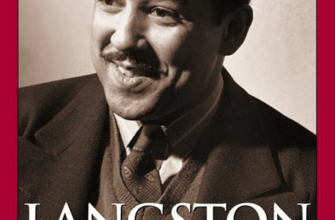Embarking on a journey through the captivating realm of literature, one cannot bypass the enigmatic figure who shaped it with his mystifying tales. Revered by many as a true luminary of his time, this literary mastermind left an indelible mark on the world of storytelling. Immersed within the depths of his prose, readers find themselves mesmerized by the intricate web he weaves, drawing them into a realm where reality and imagination intertwine.
The atmosphere he creates is shrouded in an ethereal charm, a blend of alluring darkness and profound insight. Each story, a chimeric tapestry of human experience, delves into the crux of the human condition, probing at the hidden depths of the soul. Using the written word as his vessel, this enigmatic wordsmith invites readers into his enigmatic world, offering a glimpse into the recesses of the human psychology.
His narratives are imbued with a certain poetic cadence, an elegant fluidity that lends a mesmerizing rhythm to his words. Through meticulous attention to detail and the artistry of his storytelling techniques, he unveils multiple layers of meaning, weaving together a tapestry that speaks to the eternal struggles and bewildering complexities of the human existence. As readers delve into the works of this literary luminary, they are transported to an alternate reality, a liminal space where the imagination reigns supreme and the boundaries of the ordinary fade into oblivion.
The Formative Years and Influences that Shaped Hawthorne

In this section, we delve into the earlier stages of Nathaniel Hawthorne's life and explore the factors that played a significant role in shaping his literary brilliance. By examining the formative years of this master storyteller, we gain insight into the key influences and experiences that shaped his unique writing style and thematic choices.
Fascination with the Dark Side: Exploring Hawthorne's Obsession with Human Morality
Within the depths of Nathaniel Hawthorne's literary creations lies an intriguing preoccupation with the darker aspects of human nature. Through his mesmerizing prose, Hawthorne delves into the complexities of human morality, unearthing hidden depths of guilt, sin, and secrecy. With a knack for dissecting the shadows of the human psyche, the master storyteller weaves captivating tales that explore the consequences of succumbing to temptation, the complexities of societal expectations, and the devastating power of secrets.
- Adventures into Sinful Territories
- An Exploration of Hidden Guilt
- Unveiling the Power of Secrets
- Confronting the Hypocrisy of Society
- The Dichotomy of Light and Darkness
In Hawthorne's literary world, characters are faced with moral dilemmas and temptation, constantly navigating the fine line between right and wrong. His mesmerizing storytelling abilities transport readers into sinful territories where the boundaries of morality become blurred, urging us to question our own capacity for darkness.
A recurring theme throughout Hawthorne's works is the exploration of hidden guilt. Through vivid character portrayals, he exposes the internal battles and torment experienced by individuals haunted by their past actions. The weight of guilt, it seems, is an ever-present shadow that follows his characters relentlessly, serving as a constant reminder of their inner turmoil.
Secrets hold a pivotal role in the narrative tapestry woven by Hawthorne. His stories unveil the power and impact secrets can have on individuals and society as a whole. Whether it is a hidden past, a concealed sin, or a forbidden love, Hawthorne's exploration of secrets showcases the destructive force they possess, often with devastating consequences for those who choose to conceal the truth.
Hawthorne masterfully exposes the hypocrisy of society through his intricate storytelling. His characters are often forced to navigate a world where external appearances and societal expectations clash with their true nature. Through their struggles and conflicts, Hawthorne raises important questions about the façade of morality and the true nature of humanity.
A contrasting interplay of light and darkness permeates Hawthorne's works, underscoring the complex nature of the human soul. Often set against a backdrop of puritanical society, the author juxtaposes virtue with vice, exploring the conflicting desires and impulses that reside within each individual.
The Scarlet Letter: Revealing Hawthorne's Psychological Depth

Delving into the psychological depths of Nathaniel Hawthorne's masterpiece, "The Scarlet Letter," allows readers to uncover a captivating exploration of human emotions and the complexities of the human psyche. Through intricate character development, subtle symbolism, and profound introspection, Hawthorne artfully unveils the intricate psychological landscape of his characters, transporting readers into a world where guilt, shame, passion, and redemption intertwine.
- The Multifaceted Characters: Hawthorne expertly crafts a diverse cast of characters, each possessing their unique psychological struggles and motivations. From the enigmatic and tormented Hester Prynne to the conflicted Reverend Arthur Dimmesdale and the vengeful Roger Chillingworth, every character undergoes a psychological journey that intricately weaves into the larger narrative.
- Symbolism and Allegory: Through the scarlet letter itself, Hawthorne employs a powerful symbol of shame and secrecy, delving into the psychological effects of societal judgment and personal guilt. The scarlet letter becomes not only a physical token but also a mirror reflecting the inner turmoil and psychological burden carried by its wearers.
- The Battle of Conscience: As the characters grapple with their own moral dilemmas and internal conflicts, Hawthorne skillfully examines the intricate interplay between the individual's conscience and societal expectations. The psychological struggle to reconcile personal desires with societal norms forms a central theme, offering deep insights into the complexities of human nature.
- Redemption and Transformation: Hawthorne's exploration of psychological depth goes beyond the darkness of guilt and shame. Through moments of genuine introspection and personal growth, the characters experience the potential for redemption and transformation. These moments highlight the resilience of the human spirit and the power of self-reflection in overcoming psychological obstacles.
Hawthorne's genius lies not only in his ability to craft a compelling narrative but also in his profound understanding of the intricacies of the human psyche. Through "The Scarlet Letter," he invites readers to explore the depths of human emotions, moral complexities, and the psychological underpinnings of his characters, ultimately leaving an indelible mark on the literary landscape.
The Pervasive Theme of Guilt and Redemption in Hawthorne's Works
In the literary realm of Nathaniel Hawthorne's astounding compositions, a recurring motif that permeates his writings is that of guilt and redemption. Hawthorne masterfully weaves these profound themes into intricate narratives, exploring the intricacies of human nature and the consequences of our actions. Through his evocative prose and vivid characters, he delves into the complexities of guilt, presenting it as a burden that haunts the conscience and drives individuals to seek redemption.
Hawthorne's exploration of guilt and redemption is not limited to the perspective of a single character or story. Instead, he skillfully portrays these themes across a range of narratives, each offering a unique perspective on the human experience. Characters such as Hester Prynne in "The Scarlet Letter" and Ethan Brand in "Ethan Brand" grapple with the weight of their transgressions, their guilt serving as a constant reminder of their past actions.
Furthermore, Hawthorne presents various avenues through which redemption can be sought by his characters. Some find solace through public confession and penance, while others embark on a personal journey of self-reflection and repentance. The author delves into the complexities of these paths, exploring the differing outcomes and consequences that arise from the choices made by his characters in their pursuit of redemption.
However, Hawthorne's portrayal of guilt and redemption is not one-dimensional. He acknowledges the nuances and ambiguity inherent in these themes, illustrating the potential for both salvation and damnation. Through his exploration of guilt-ridden characters who struggle to find redemption, Hawthorne prompts readers to reflect on their own capacity for forgiveness and redemption, inviting them to contemplate the complexities of moral responsibility and the choices that define one's character.
| Guilt | Redemption |
|---|---|
| Transgressions | Solace and self-reflection |
| Conscience | Public confession and penance |
| Weight and burden | Personal journey towards repentance |
| Ambiguity and nuances | Salvation and damnation |
| Moral responsibility | Choice and character |
The Enduring Influence of Hawthorne: Shaping American Literature and Beyond

In this section, we explore the profound impact Nathaniel Hawthorne's works have had on American literature and beyond, shaping the literary landscape of his time and leaving a lasting legacy that continues to inspire readers and writers alike.
- Innovation and Symbolism: Hawthorne pioneered the use of symbolism in American literature, infusing his works with layers of meaning and depth that captured the imagination of readers. Through his skillful storytelling, he brought forth a new approach to exploring complex themes and emotions.
- Moral and Psychological Exploration: Hawthorne delved into the human conscience, exploring the depths of guilt, sin, and human nature. His exploration of these moral and psychological complexities resonated with readers, shining a light on the dark corners of the human experience.
- Romanticism and Transcendentalism: Hawthorne's works straddled the realms of Romanticism and Transcendentalism, embodying the spirit of these literary movements. His narratives reflected the romantic ideals of individualism, nature, and the supernatural, while also questioning the limitations of societal norms.
- Regional and Historical Authenticity: Hawthorne's settings, particularly in his most famous work, "The Scarlet Letter," immersed readers in the historical context of Puritan New England. His vivid descriptions and attention to detail provided a sense of authenticity, transporting readers back in time and allowing them to experience the ambience of the era.
- Influence on Future Writers: Hawthorne's exploration of the complexities of human nature and his innovative approach to storytelling left an indelible mark on future generations of writers. His influence can be seen in the works of prominent authors such as Herman Melville, Henry James, and William Faulkner, who were inspired by his mastery of the craft.
- Relevance in Contemporary Literature: Even in the modern era, Hawthorne's themes and literary techniques continue to resonate with readers. His exploration of universal human experiences such as love, guilt, and redemption transcends time and remains highly relevant in contemporary literature, cementing his legacy as a true literary genius.
It is through these various aspects of Hawthorne's writing, his ability to delve into the depths of human nature, and his skillful weaving of symbolism that his impact on American literature and its enduring legacy were formed. The mark he made on the literary world extends far beyond his own time, ensuring that his contributions will forever be celebrated and explored.
FAQ
Who was Nathaniel Hawthorne and why is he considered a master storyteller?
Nathaniel Hawthorne was an American writer known for his dark romanticism and exploration of moral and psychological themes. He is considered a master storyteller because of his unique ability to create intricate and captivating narratives that delve into the human psyche.
What are some of Nathaniel Hawthorne's most famous works?
Nathaniel Hawthorne is best known for his novels such as "The Scarlet Letter," "The House of the Seven Gables," and "The Blithedale Romance." He also wrote numerous short stories, including "Young Goodman Brown" and "The Minister's Black Veil," which are considered classics of American literature.
What were the major themes in Hawthorne's writings?
Hawthorne's writings often revolved around themes of sin, guilt, morality, and the consequences of one's actions. He frequently explored the dark side of human nature and the conflicts between individual desires and societal expectations.
How did Hawthorne's background and life experiences influence his writing?
Hawthorne's puritan ancestry and upbringing in Salem, Massachusetts heavily influenced his writing. His family's history of involvement in the Salem Witch Trials and his own feelings of guilt and isolation shaped his exploration of sin and guilt in his works. Additionally, his time working at a customs house inspired elements of bureaucracy and hypocrisy that can be seen in his stories.
What impact did Hawthorne's works have on American literature?
Hawthorne's works had a significant impact on American literature, particularly in the realm of dark romanticism. His exploration of complex psychological and moral themes paved the way for future American writers to delve into the inner workings of the human mind. His writings continue to be studied and appreciated for their timeless themes and masterful storytelling.



